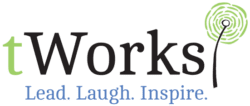So, we want to increase and diversify the talent pool. Great! Yet, many individuals will simply become their own human resource manager screening themselves out before they screen themselves in.
Did you know that women statistically will only apply for jobs if they meet 100% of the job requirements posted yet men will apply for jobs when they meet a minimum of 60% of the job requirements listed in a job description.
By utilizing more gender neutral language in job descriptions we increase the potential of a more diverse talent pool. Additionally, by using gender neutral language we don’t make assumptions about gender for a position.
Is leadership gendered? Well, technically, no yet women are still the minority at the executive board level. Looking at the Fortune 500 in January 2023, 53 women held CEO positions; 447 CEOs were men. Though, on the flipside, accordingly to a McKinsey report female leaders experience much higher rates of burnout than men- 40% compared to 33%. Though a major reason why the burnout rate of women leaders is higher is because of the ‘invisible housework’ that occurs for women. The duality and fluidity of roles at home and at work. I’ve often said women can absolutely have it all- just not all at once- and maybe a lot of women relate to this hence why the numbers of females in leadership is lower too.
However, it’s not because women don’t want to be in leadership roles. Like most issues, it’s a bit chicken and egg.
According to research published by the Women and Public Policy Program by Harvard Kennedy School, women continue to be underrepresented in male-dominated fields such as engineering, natural sciences and business. Stereotypes and beliefs surrounding this fields have existed for decades perpetuating gender inequalities and resulting in less women in the fields. Only since 1973 are job advertisements not allowed to advertise specifically for men or women or use pronouns such as he or she yet gender neutral job advertisements isn’t necessarily a construct that organizations understand let alone implement.
Yet, gender preferences can be conveyed in very subtle ways in job descriptions through language used. For example, words such as competitive, determined, dominant, active, ambitious, challenging, confident, decisive, determined, and objective are more masculine-centric descriptors and could attract more male candidates for positions. Examples of feminine-themed words include communicative, collaborative, connected, cooperative, dependable, interpersonal, trustworthy, and responsible and, if used, could attract more females to apply.
Fun Facts:
- Job advertisements using more masculine descriptors were perceived by both men and women to have fewer women in the occupation
- Job advertisements utilizing more masculine descriptors were deemed less appealing by women. Alternatively, job advertisements utilizing more feminine descriptors were deemed less appealing by men.
- Job advertisements utilizing more masculine descriptors led women to believe that they wouldn’t feel a ‘sense of belonging’ at the workplace
So what can we do to increase gender parity while reducing ongoing gender gap in male dominated roles and leadership positions?
We can attempt to remove unconscious bias, in particular gender bias, from job descriptions and create more inclusive, gender-neutral job descriptions. However, we can also attempt to avoid racial bias and affinity bias as well by avoiding exclusionary language.
- It might seem obvious but avoid he/him and she/her and use you. By using ‘you’ it allows the potential candidate to see themselves in the position. If we can see it, we can be it.
- Be transparent with salary and benefits packages- better yet, if your company offers flexible benefits packages use this as an inclusionary job benefit. When companies are transparent about salary and/or salary ranges then candidates know that they are being fairly and equally compensated. In North America, full time working women make 26% less than full time working men. However, if salary ranges were transparent in nature this could potentially reduce the wage gap in gender disparity.
- List essential requirements and objectives of position- why? As mentioned previously, women will only apply for positions that they feel fully qualified for. If they don’t meet all of the qualifications listed they may not apply. However, if objectives are listed openly and transparently ie. increase sales within the conventions and meetings market by 5% or have extensive experience using a wide range of social media platforms not only outlines expectations, more women may potentially apply diversifying and increasing the talent pool
- Decrease over usage of masculine and feminine centric descriptors and utilize a more gender neutral and/or gender balanced approach. Literally count the coded feminine and coded masculine words in your job descriptions and balance the words out. For example, swap the word ‘strong’ for ‘solid’ – which is an example of more gender neutral language usage. Alternatively, state ‘strong interpersonal’ skills required- which is an example of more gender balance language usage.
- Stating that you are an equal opportunity employer committed to diversity and inclusion and that you compensate regardless of gender, race, religion, sexual orientation, age, weight, disability (both physical and emotional). However, to advertise these statements then companies need to ensure they live and breathe these statements organizationally otherwise it’s optical allyship aka lip service.
To assist in avoiding racial bias which can be a form of affinity bias we can dive even deeper into what a job description needs to entail as often we recycle job descriptions without deconstructing them for potential implicit biases. A few thoughts to consider:
According to the National Bureau of Economic Research, job applicants with white sounding names need to send approximately 10 resumes to receive one call back compared African-Americans who need to send at least 15 resumes to receive one call back. Two University of Toronto researchers found that resumes with English-sounding names are 35% more likely to receive callbacks than resumes with Indian or Chinese names. Being educated in Canada at a Canadian university, sadly, did not make a substantial difference in callback rates. However, job experience in Canada versus job experience in China or India did assist. Again, it’s a chicken and egg scenario as how does one obtain job experience if they are not receiving a callback? Some of the research suggests that the conscious or unconscious bias lay in the fact that recruiters assumed that those with Indian and Chinese names were, indeed, immigrants and therefore lacked social and communication skills to be successful at the position. Vancouver, a population that in 2023 was 48% foreign born was the city least swayed by the ethnicity of applicants’ names however those with English sounding names were still 20% more likely to receive a callback than those with Indian and Chinese names proving inherent conscious or unconscious bias in recruitment.
Looking at language in a less overt way, some companies will advertise employee perks such as ‘happy hours’ or pizza luncheons. However, many prospective candidates choose not to drink alcohol for religious and cultural reasons. Some of dietary requirements due to religious and cultural reasons therefore excluding some potential great prospects from applying. This does not mean not to have ‘happy hours’ in the workplace but rather looking at how they are advertised externally and internally to be more inclusive. Perhaps a picture of a mocktail and a vegetarian option on a poster might suffice. Most restaurants offer gluten free and dairy free options yet its rare to see pork free and/or halal options advertised on menus.
Adam Grant, author of Originals: How Non-Conformists Move the World talks about why hiring for culture fits holds organizations back. When someone is different in thought, perspective and culture there is opportunity to innovate more. Think of how many products were innovated more including Lays Masala Potato Chips, Crayola Colours of the World Crayons, Fenty Beauty by Rihanna and even Bandaids.
Having unconscious bias does not make someone racist nor discriminatory. It makes us human. However, we all can become better humans.
Better hirers.
Better, more inclusive organizations.

